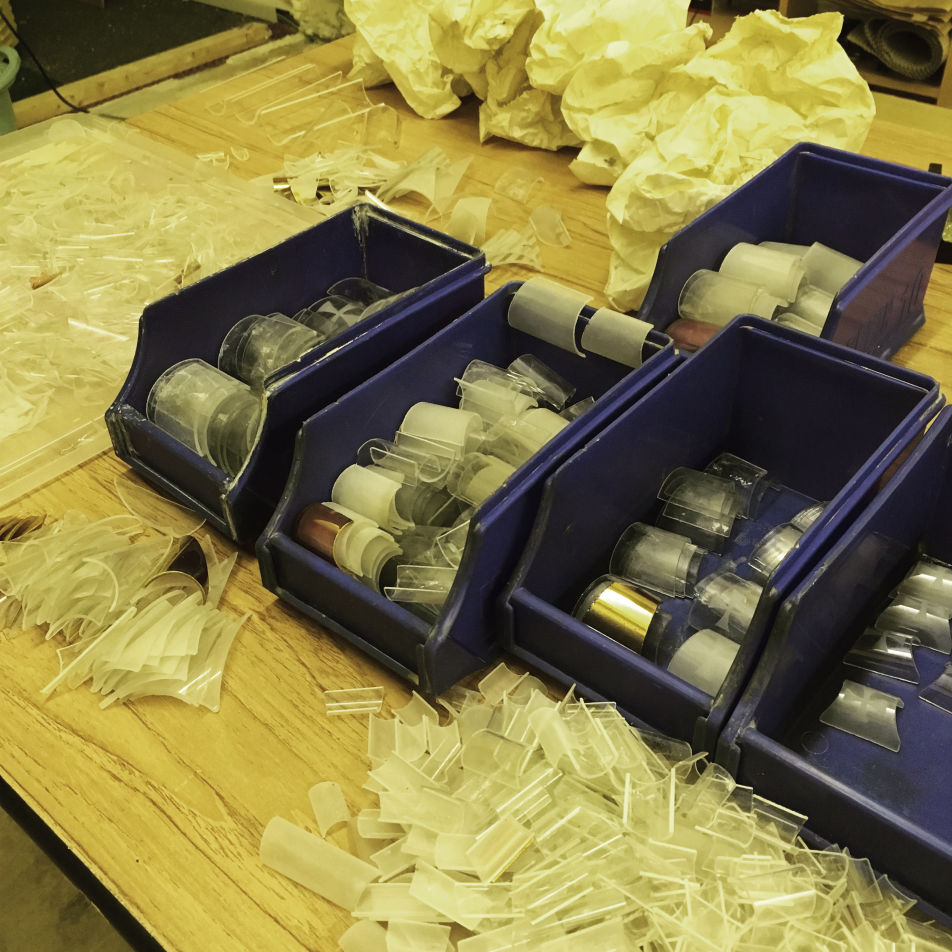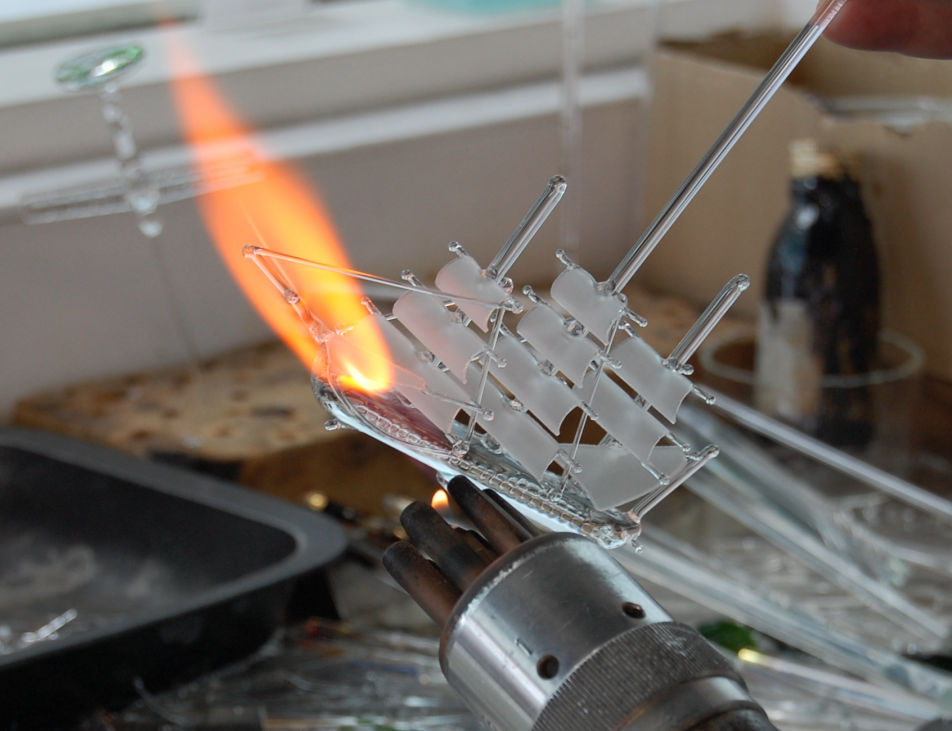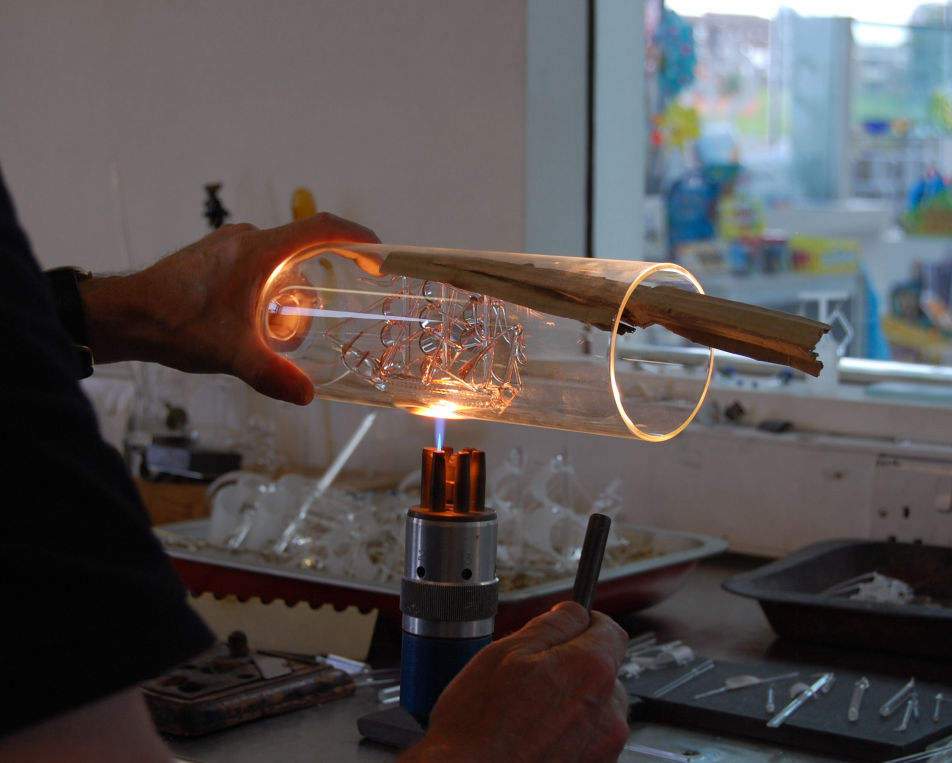
Regardless of time and make, glass ships in bottles consist of common stylistic features, including the ship's body, masts, sails, rigging and the bottle itself. Sails are invariably made of glass tubes sliced into small sections. The curved surface of the original tube lends itself to the depiction of billowed sails. Some patterns can be added by sandblasting, and they are sometimes fumed with gold.
Larger diameter tubes are used to make the bottles, thick rods become the ship's body and thin rods form the masts. The manufacturer of glass ships in bottles was largely instigated by newly redundant scientific glassblowers because these design features implemented the economic necessity of consuming surplus stocks of rods and tubes.

